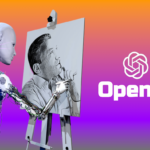1. Introduction
The rapid evolution of artificial intelligence has significantly impacted the field of 3D modeling. For personal design enthusiasts—ranging from hobbyists who dabble in digital art to indie creators aiming to prototype game assets—the advent of AI-driven 3D model generators has been revolutionary. In 2025, a variety of tools have emerged that simplify and accelerate the 3D content creation process, allowing users to generate detailed models from text prompts or single images in a matter of seconds. This article provides a comprehensive analysis of the top AI 3D model generators tailored for personal design, offering in-depth insights into their features, pricing, and technical performance while backing every claim with supporting research.
2. Overview of AI 3D Model Generators for Personal Design
AI 3D model generators leverage advanced machine learning techniques to automate what was once a time-consuming and technically demanding process. For personal design, these tools address several key challenges:
- Speed of Generation: Reducing the time from concept to model from days to minutes or even seconds.
- Affordability: Offering pricing schemes that are accessible for hobbyists and solo designers compared to traditional 3D modeling software.
- Ease of Use: Providing intuitive interfaces that allow users with limited 3D expertise to generate high-quality models.
- Customization and Quality: Enabling users to interactively refine outputs, adjust texture mappings, and apply procedural modifications.
The growing adoption of these tools is underscored by research studies and market comparisons, which note dramatic workflow improvements as well as cost-efficiency compared to conventional 3D modeling pipelines. In the following sections, we review and analyze five leading tools that have gained popularity among personal designers in 2025.
3. Detailed Analysis of Top AI 3D Model Generators
3.1. 3D AI Studio
Overview:
3D AI Studio is an all-in-one platform designed to support both text-to-3D and image-to-3D conversions. Users can type descriptive prompts—such as “a futuristic spaceship” or “modern chair with organic curves”—and the algorithm instantly produces a detailed 3D model. Its integrated automatic UV mapping and advanced texture generation facilitate a smooth transition from concept to exportable model.
Features:
- Text-to-3D Generation: The system understands natural language prompts and generates models accordingly. This function is particularly useful for personal design where conceptual ideas rapidly need visual validation.
- Image-to-3D Conversion: Users can upload photographs or reference images, and the AI reconstructs a corresponding 3D asset with minimal manual intervention.
- Export Capability: Models can be exported in popular formats such as GLB, FBX, OBJ, or USD, ensuring compatibility with contemporary design software.
- Rapid Workflow: Reports indicate that 3D AI Studio can reduce the creation cycle from several days to an average of 15–30 minutes, which includes prompt writing, model generation, refinement, and final export.
Pricing:
- Entry-level subscription tiers start at approximately $6.90 per month (providing 300 credits) with more advanced packages available for increased credit allotments and features.
Suitability for Personal Design:
For users looking for a robust and time-efficient tool, 3D AI Studio provides an excellent blend of automation and creative control. Its ease of use, combined with affordable pricing, makes it ideal for hobbyists and individual designers who aim to generate creative assets with minimal technical hassle.
3.2. Meshy.ai
Overview:
Meshy.ai focuses on optimizing existing 3D models by streamlining polygon count, enhancing textures, and ensuring compatibility with popular design tools. It can transform initial concept models into production-ready assets with improved performance—a particularly appealing feature for game developers and 3D printing enthusiasts working on personal projects.
Key Features:
- AI-Powered Mesh Optimization: The platform automatically reduces the polygon count (by about 40–60%) while preserving detail, ensuring that models are lightweight and efficient for real-time applications.
- Seamless Software Integration: Meshy.ai supports integration with tools like Blender, Maya, and Unity, which is beneficial for users who intend to move beyond pure concept work to full-fledged design pipelines.
- Customization Options: Although the tool automates many tasks, users can make manual adjustments to ensure models fit specific project requirements.
Pricing:
- Meshy.ai offers a free plan that includes a set number of credits (typically 200 per month) which is particularly useful for personal experimentation. Advanced features such as batch processing require a paid subscription starting at around $16 per month.
Suitability for Personal Design:
Meshy.ai is best suited for designers looking to refine and optimize existing models. Whether one is creating digital art, prototyping game assets, or preparing files for 3D printing, Meshy.ai’s optimization tools simplify the creative process and reduce the time-intensive manual adjustments traditionally required.
3.3. Sloyd.ai
Overview:
Sloyd.ai stands out for its focus on procedural asset creation. It offers a vast library of customizable base models that can be instantly adapted to the user’s needs. With real-time AI-assisted customization and sophisticated procedural algorithms, it empowers designers to create unique, modular assets without being limited by standard templates.
Key Features:
- Procedural Asset Library: Sloyd.ai features hundreds of base models that can be dramatically customized using AI-driven parameters, ideal for producing creative variations quickly.
- Interactive Customization: The platform features an intuitive interface for modifying assets. Users can adjust dimensions, apply texture changes, and alter geometrical details on the fly.
- Automatic UV Unwrapping and LOD Generation: Sloyd.ai automatically prepares models for further digital rendering, making it simpler to integrate assets into broader design projects.
Pricing:
- A free plan is available with basic features, while professional users can access additional tools and optimizations with the Pro plan starting at approximately $15 per month.
Suitability for Personal Design:
Designed to inspire creativity, Sloyd.ai is particularly beneficial for indie game developers and digital artists who need to populate their projects with a variety of customizable assets. Its flexibility and ease of use make it an attractive option for personal design projects that require rapid prototyping and diverse creative outputs.
3.4. DeepAI 3D Model Generator
Overview:
DeepAI 3D Model Generator is a versatile and cost-effective tool aimed at beginners. It allows users to create 3D models from both text and images with a focus on accessibility and ease of use. While it may not offer the highest detail compared to some commercial-grade platforms, its affordability and simplicity are key advantages for users starting in the 3D design field.
Key Features:
- Multi-Purpose Functionality: The platform caters to various needs by combining text and image input features with basic customization tools.
- User-Friendly Interface: Its clean layout and intuitive controls make it accessible to newcomers, ensuring that even those with limited experience in 3D modeling can quickly learn and benefit from the tool.
- Affordability: At around $4.99 per month for the PRO plan, DeepAI offers one of the lowest-cost solutions on the market.
Limitations:
- Output Scale: Models are typically generated with a maximum polygon count of around 25k and may come with simpler texturing compared to higher-end alternatives.
- Basic Customization: Advanced artists might eventually find its customization options limited for more refined work.
Suitability for Personal Design:
DeepAI 3D Model Generator is best suited for personal projects, educational purposes, and casual experimentation. Its low price and ease of use make it an excellent stepping-stone for those who are new to 3D modeling and wish to build foundational skills without a steep learning curve.
3.5. Spar3D
Overview:
Spar3D is unique among the tools discussed as it originated as a research project focused on image-to-3D reconstruction. It is primarily designed to reconstruct 3D models from a single image, optimizing speed and making it a powerful asset for rapid prototyping and augmented reality (AR)/virtual reality (VR) applications.
Key Features:
- Ultra-Fast Inference Speed: With an inference time typically around 0.7 seconds, Spar3D sets a new standard for rapid model generation.
- Interactive Editing: Although its output is generated very quickly, the platform also allows for manual adjustments to fine-tune the final model.
- Free Access: Currently offered as a research project, Spar3D is free to use, making it particularly attractive for personal and exploratory projects.
Limitations:
- Export Options: As a research tool, its range of export formats and model refinement options may be more limited than those offered by commercial solutions.
- Post-Processing Requirements: Users might need to perform additional manual cleanup or refinement to use the generated models in production environments.
Suitability for Personal Design:
Spar3D is highly suitable for tech enthusiasts, digital artists, and experimental designers who wish to explore rapid 3D reconstruction techniques. Although it may require additional post-processing for professional-level outputs, its speed and accessibility position it as an innovative tool for personal creative projects.
4. Comparative Feature and Pricing Analysis
To better understand the strengths and weaknesses of each tool, the following table provides a side-by-side comparison of their key features, technical capabilities, and pricing models:
| Tool | Primary Function | Key Features | Pricing | Ideal For |
|---|---|---|---|---|
| 3D AI Studio | Text-/Image-to-3D generation | Natural language prompt generation, automatic UV mapping, export-ready models | From ~$6.90/month | Hobbyists and prototyping for games, architecture, and art |
| Meshy.ai | Mesh optimization | AI-powered polygon reduction, seamless integration with design software | Free tier; $16/month for batch processing | Optimization for game assets and 3D printing |
| Sloyd.ai | Procedural asset creation | Interactive customization, vast asset library, automatic LOD and UV mapping | Free plan; Pro from ~$15/month | Indie game design and modular asset creation |
| DeepAI 3D Model Generator | Basic 3D generation | Multi-input generation (text/images), beginner-friendly interface | ~$4.99/month (PRO) | Beginners, students, and casual 3D creators |
| Spar3D | Image-to-3D reconstruction | Ultra-fast (<1 sec) inference, real-time editing, free research tool | Free | Experimental and rapid prototyping in AR/VR |
Discussion:
- Workflow Efficiency: AI tools have reduced the modeling process significantly. For instance, while traditional workflows might take several days from concept sketching to final texturing, these AI solutions allow for model generation and basic refinement in under 30 minutes.
- Cost-Effectiveness: With subscription prices ranging from free or under $5 per month to less than $30, these tools provide drastic savings compared to traditional 3D modeling software which can run into hundreds or thousands of dollars annually.
- Customization Versus Automation: While tools like 3D AI Studio and Sloyd.ai offer significant automation with interactive customization, options such as DeepAI serve as excellent starting points for those learning the basics.
- Performance Metrics: For many personal projects, a polygon count below 100k and standard texture resolutions (e.g., 2048×2048 or up to 4K) are sufficient. Meshy.ai and 3D AI Studio are designed to address these requirements without overwhelming the user.
5. Emerging Trends in AI-Driven 3D Modeling
The evolution of AI 3D model generators is ongoing, and several key trends have emerged in 2025, particularly for personal design applications:
- Enhanced Processing Speeds:
Tools like Stable Fast 3D by Stability AI have demonstrated generation speeds as short as 0.5 seconds per model, a significant improvement compared to previous models which took up to 10 minutes. This unmatched speed is reshaping rapid prototyping and experimentation . - Integration of Advanced Texture and Material Generation:
AI-driven texture creation, including physically based rendering (PBR) and automatic UV unwrapping, now allows many platforms (e.g., 3D AI Studio and Meshy.ai) to produce models with high-quality surface details. Combining automated texturing with manual customization has reduced post-processing times significantly . - Mobile and Cloud Integration:
With the increased reliance on cloud-based services and mobile interfaces, users can now generate and adjust 3D models using smartphone cameras and apps. This democratization of 3D modeling has been supported by tools that leverage smartphone LiDAR and cloud computing for instant model rendering . - Real-Time Collaboration and Community Features:
Many of the latest solutions are incorporating real-time collaboration, allowing solo designers to share projects with peers, receive feedback, and iterate rapidly. This community-driven approach has further enhanced the speed and quality of personal design projects . - Low-Code and Simplified Interfaces:
In keeping with the trend towards making 3D design more accessible, many platforms emphasize low-code interfaces with intuitive control panels. This ensures that even designers without extensive technical backgrounds can harness the power of AI to generate high-quality models . - Research Prototypes Leading to Commercial Tools:
Experimental platforms like Spar3D pave the way for future commercial tools. Although originally developed as research projects, innovations such as single-image 3D reconstruction are increasingly influencing commercial products .
6. Conclusion
The landscape of AI-based 3D modeling in 2025 offers a broad spectrum of tools designed to meet the diverse needs of personal designers. Here are the key insights:
- Time Efficiency:
AI tools reduce the traditional 3-5 day design cycle to as little as 15–30 minutes, making them highly appealing for rapid prototyping and iterative design . - Affordability:
Ranging from free access (in the case of research tools like Spar3D) to subscription fees as low as $4.99 per month, these AI tools significantly lower the financial barrier to entry compared to conventional 3D software . - Ease of Use and Customization:
Platforms like 3D AI Studio and Sloyd.ai combine automation with user-controlled customization, giving personal designers the best of both worlds—a streamlined process with the flexibility to achieve unique model aesthetics . - Diverse Applications:
Whether the goal is to create game assets, prototypes for architectural visualization, or models for 3D printing, there is a tool tailored to each need. For example, Meshy.ai excels at model optimization for real-time use while DeepAI provides a gateway for beginners . - Future Developments:
Emerging trends, such as faster generation speeds, advanced texture automation, and mobile/cloud-based workflows, promise to further enhance the usability and quality of AI-driven modeling tools in the coming years .
Main Findings:
- 3D AI Studio offers a comprehensive solution with both text-to-3D and image-to-3D capabilities, making it a top choice for personal design projects.
- Meshy.ai provides essential optimization for existing models, beneficial for refining and preparing assets for diverse applications.
- Sloyd.ai’s strength lies in its procedural asset library and interactive customizations, ideal for generating a broad range of modular designs.
- DeepAI 3D Model Generator stands out as the most cost-effective option for beginners.
- Spar3D, though primarily a research tool, showcases unparalleled speed in generating detailed models from single images.
For personal designers, the selection of an AI 3D model generator should be guided by the specific requirements of the project, the desired balance between ease of use and customization, and budget constraints. In summary:
- If speed and a versatile workflow are paramount, 3D AI Studio is highly recommended.
- For model optimization and integration with industry tools, Meshy.ai is ideal.
- For creative, procedural asset generation, Sloyd.ai offers excellent functionality.
- For beginners or those on a tight budget, DeepAI provides an accessible entry point.
- For experimental and rapid prototyping, especially with AR/VR applications, Spar3D is an exciting option.
By understanding these factors and evaluating the features of each tool, personal designers in 2025 can select the most appropriate AI 3D model generator to transform creative ideas into detailed, high-quality digital models with unprecedented speed and efficiency.



